In addition to being a country, Australia is also a continent, but the continent of Australia is not just composed of Australia itself. The Australian continent includes mainland Australia, Tasmania, New Guinea, the Aru Islands, the Ashmore and Cartier Islands, and most of the Coral Sea Islands as well as a smattering of other islands. Why they’re all considered part of the same continent is because they’re all part of the Sahul Shelf, the continental shelf of the Australian continent.
New for 2023, Safari Ltd. has released this Australian continent set. It includes a mix of animals from Australia and New Zealand. But although they’re close neighbors, New Zealand is not part of the Australian continent. It sits on the Pacific-Australian plate boundary and is part of the mostly submerged continent of Zealandia. It is, however, part of the Oceanian sub-region known as Australasia. And there’s your geography lesson for the day.
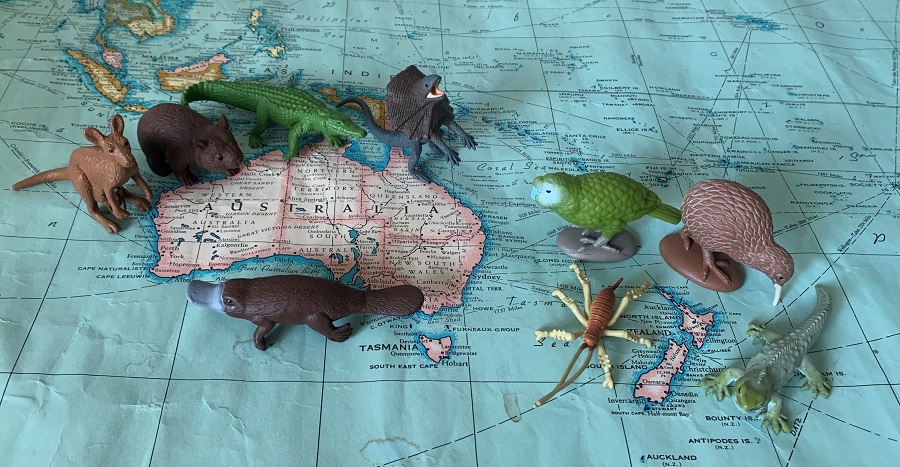
Although not part of the same continent, Australia and New Zealand are often associated with each other, and by including New Zealand in this TOOB it means we can get four unique sculpts of some of New Zealand’s most interesting and iconic animals. The Australian animals in this TOOB are all repeats, figures that were included in the fantastic Land Down Under TOOB that I already reviewed. Check it out, here.
Talking briefly about New Zealand it is important to know that New Zealand has been geographically isolated from the rest of the world for 80 million years. As such, it is home to a variety of organisms not seen anywhere else in the world. Lacking in native mammals (aside from bats) New Zealand was dominated by birds, including many flightless species that are now threatened with extinction due to the introduction of mammalian predators. New Zealand is also home to the tuatara, the last surviving member of the Rhynchocephalia order of reptiles. Honestly, an entire TOOB could be dedicated to New Zealand specifically, but this will suffice for now. Enough with the preamble though, it’s time to look at what this TOOB includes.

Giant Wētā: Giant wētā is the common name given to 11 different species belonging to the Deinacrida genus. Larger species are among the world’s largest insects, with a body length of 4” (10 cm), not including the antennae and legs. Most giant wētā species are endangered and protected by law. The Safari figure doesn’t specify what species it is. The entire figure measures 2.75” but the body alone measures 1”, putting the figure at 1/3 in scale when scaled down from a 3” specimen. With its spike-like ovipositor at the end of the abdomen the figure represents a female, which grow larger than males. Fine details like the mandibles and spikes on the legs are exceptionally well done. The body is painted brown, and the underside, legs, and antennae are tan. So popular is the wētā in NZ that a visual effects company named themselves after them, Wētā Workshop, which director Peter Jackson used for his Lord of the Rings films and King Kong remake.

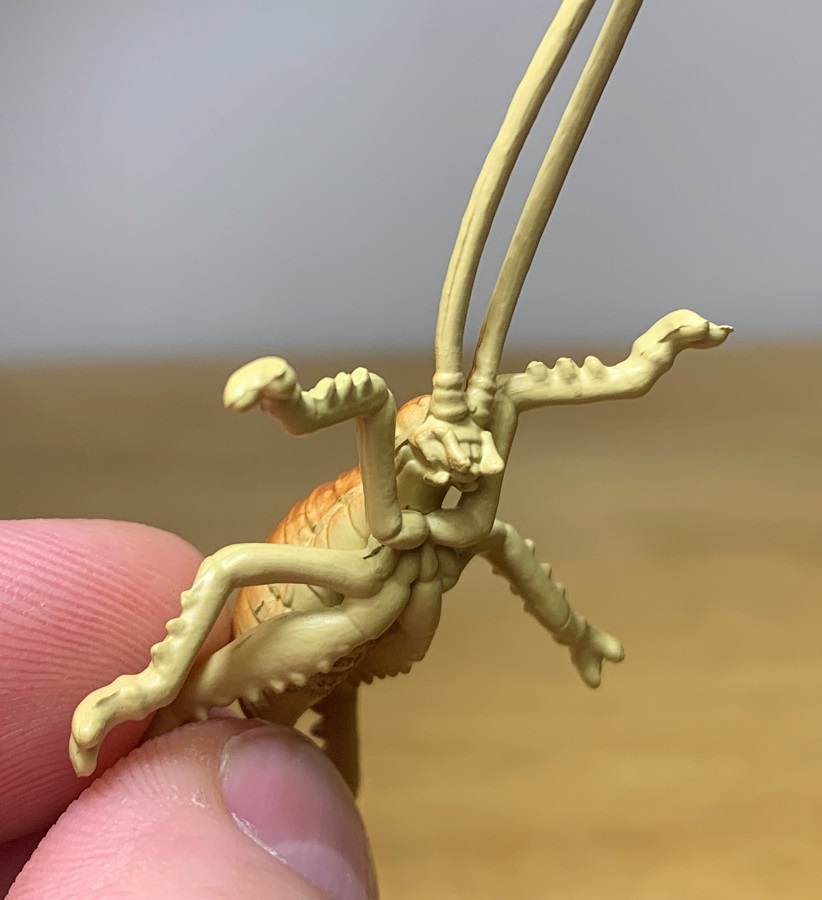

Tuatara: Fans of the tuatara (Sphenodon punctatus) are having quite a year thanks to Safari Ltd. Not only did we get one in their Incredible Creatures line but we’re also getting this TOOB sized mini which should satisfy more scale-conscious collectors. This figure measures about 3.5” which puts it at 1/6 in scale when scaled down from a length of 24”. This figure is painted pale green with black eyes, and shares most of the same details as its larger counterpart, including thick ridges of skin on the flanks, a row of dorsal spines, and crocodile-like scales down the tail. I would say it would make a great baby for the larger figure but since tuatara are cannibalistic, maybe not.
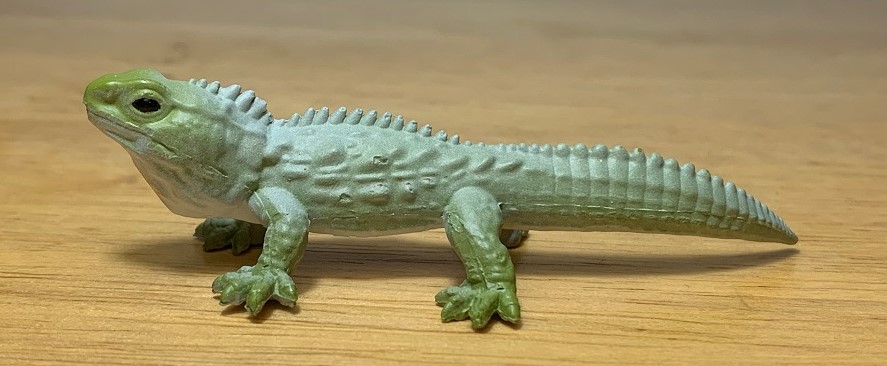

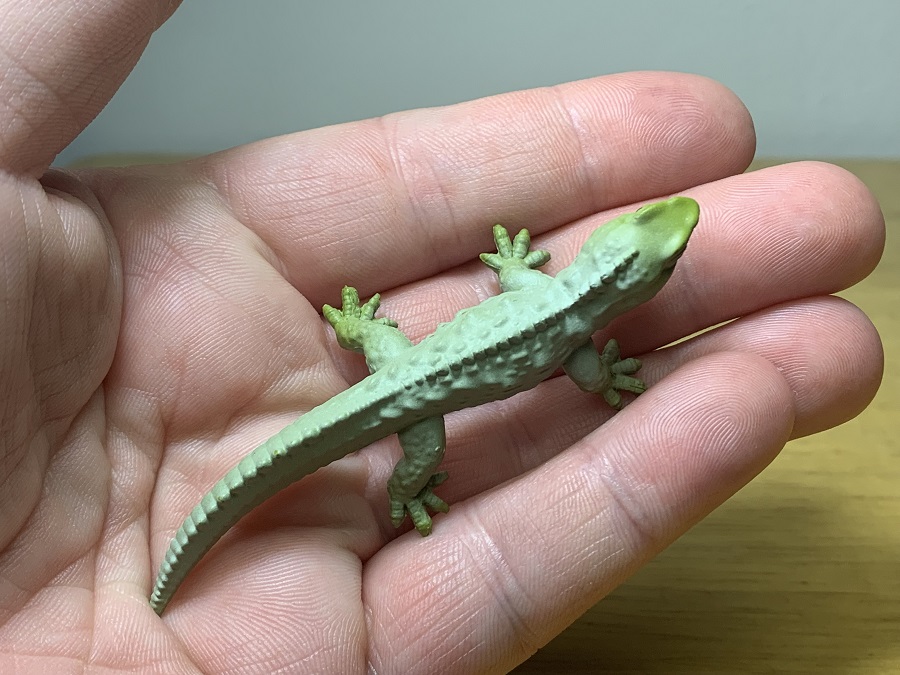
Kākāpō: Also known as the owl parrot (Strigops habroptilus) due to its nocturnal habits, the kākāpō is a large species of flightless parrot and one of the many victims of New Zealand’s mammalian invaders. Only about 248 individuals remain, closely monitored on a couple of small, predator-free islands. Figures of the species are about as rare as the bird itself, making it an excellent addition to the TOOB that should generate great interest. The Safari kākāpō is painted light green with white around its black eyes. The beak is blue, and the legs are gray, it stands on a gray base. The figure measures about 2.25” while the actual bird can reach 25”, putting the figure at about 1/11 in scale. The figure is nicely detailed with a complete coat of sculpted feathers and scaly feet. This is my favorite figure in the entire TOOB!
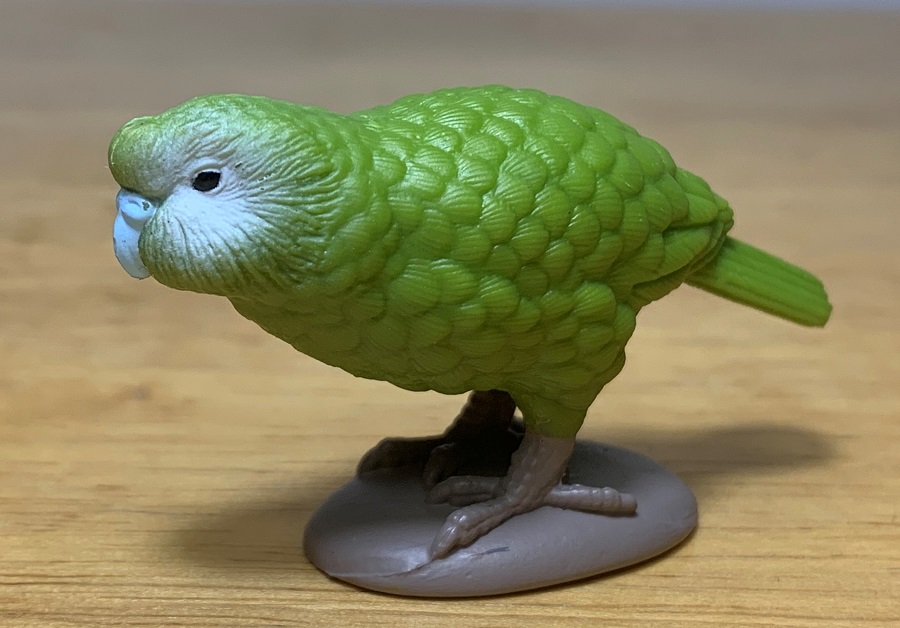

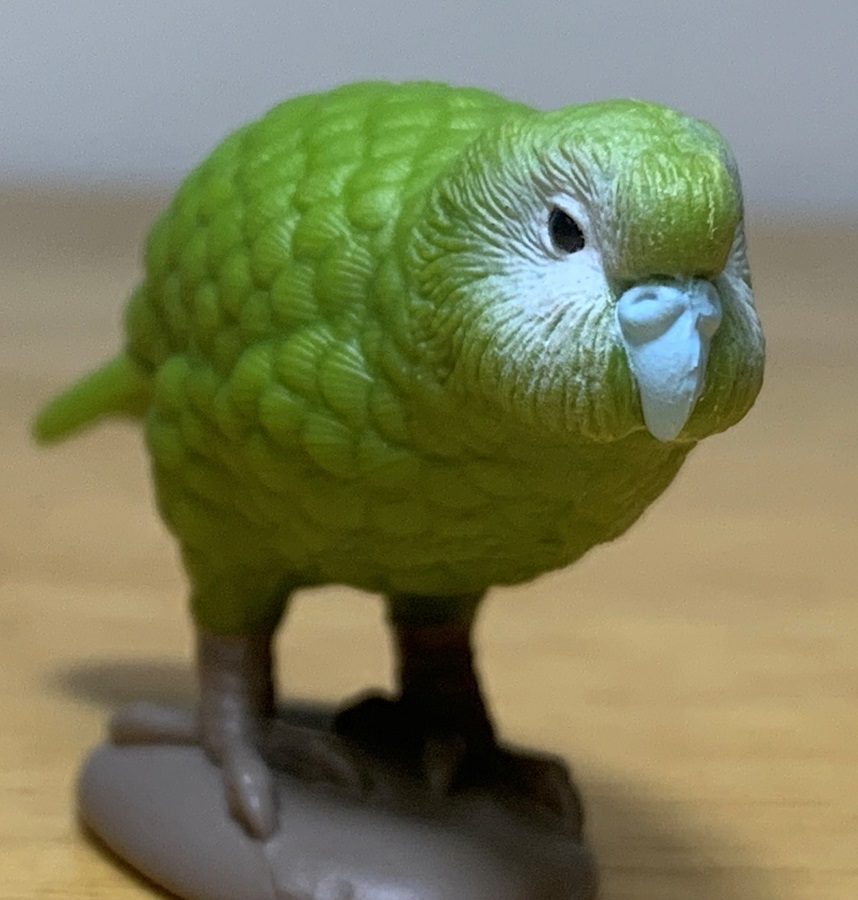
Kiwi: Five species of kiwi currently live on New Zealand, all belonging to the Apteryx genus. Safari Ltd. does not specify what species their kiwi is. The kiwi is easily New Zealand’s most familiar bird and an essential addition to any collection of New Zealand animals. This one is presented in a foraging posture. Kiwis are flightless and the smallest living ratites. They’re nocturnal and use their long bills and keen sense of smell (uncommon in birds) to forage and probe for ground-dwelling invertebrates. This figure is painted brown with a pale wash between the individually sculpted feathers. The base is also brown. The bill is creamy white, and the eyes are black. The figure measures about 2” in length while actual kiwi birds reach about 24”, putting the figure at about 1/12 in scale.

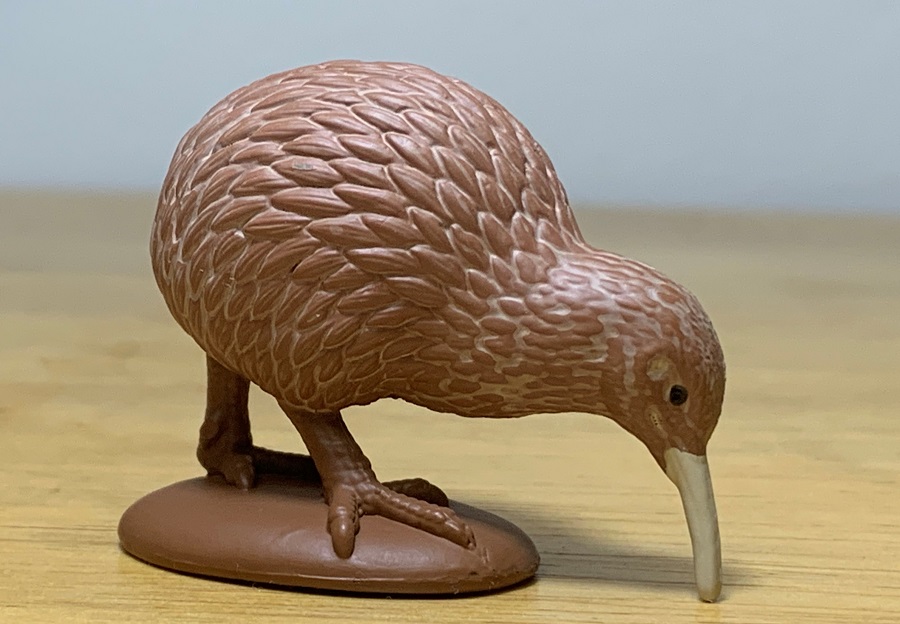
Frilled Lizard: The frilled lizard (Chlamydosaurus kingii) might be the most quintessential and recognizable lizard that Australia has to offer. They have a most unusual and intimidating display where they gape their mouth, open the frill around their neck, and even run bipedally. So threatening is the display that it was applied to the Dilophosaurus in Jurassic Park. This frilled lizard is presented with its mouth open, frill extended, and standing on its hind limbs. There’s nothing to be afraid of here though, the toy is quite cute in fact with its beady little black eyes and toothless, pink mouth. The figure measures about 3”, putting it at about 1/11 in scale when scaled down from a 35” specimen.
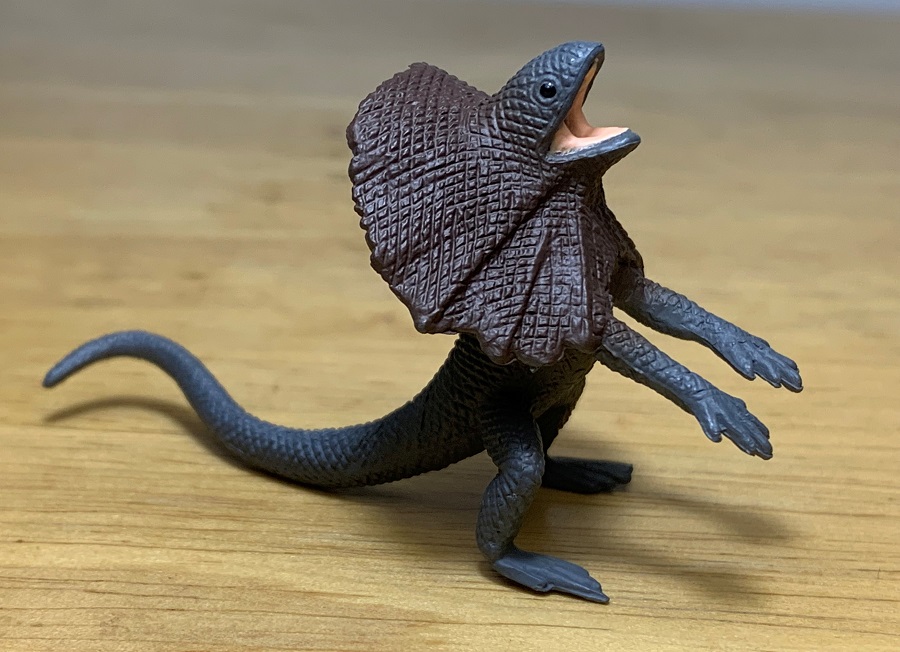
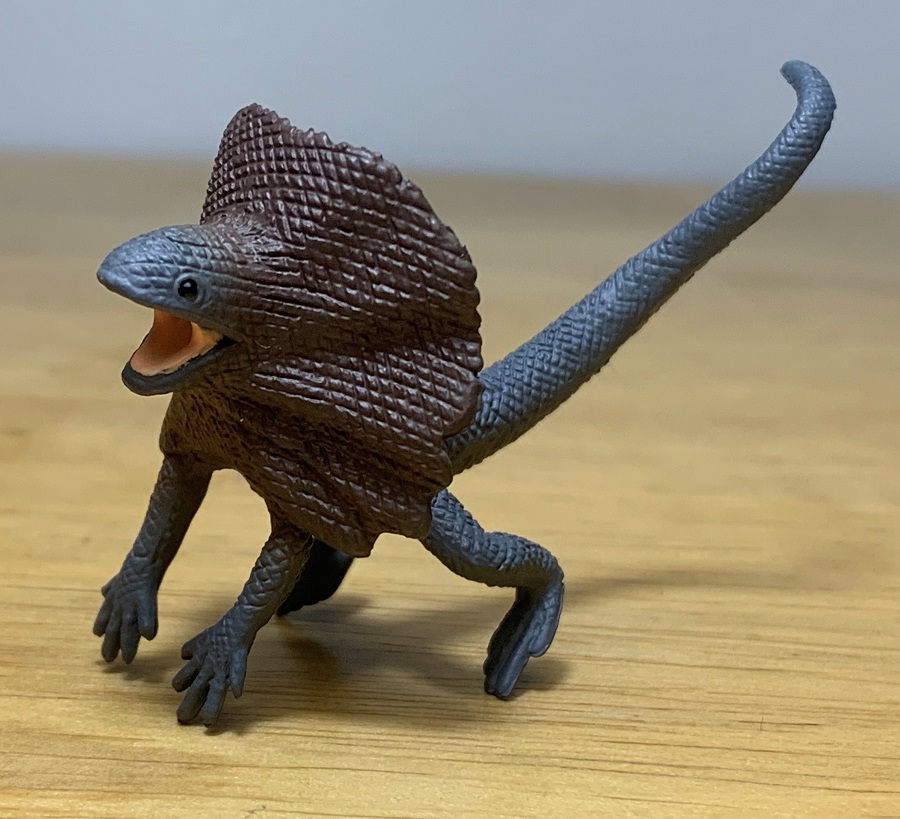
Saltwater Crocodile: The saltwater crocodile (Crocodylus porosus) occurs in Australia as well as throughout Southeast Asian islands and mainland south and Southeast Asia. Crocodiles are popular as toys but this one is quite exceptional, presented in a high-walking stance with the legs lifting the body up off the ground. For this reason, and because of the exquisite fine detail on the head, scales, and osteoderms along the back, this is a personal favorite figure in the TOOB. This figure measures roughly 4” which puts it at about 1/60 in scale when scaled down from a 20’ specimen.


Platypus: Australia isn’t just home to marsupial and placental mammals but also the world’s only extant monotremes; egg-laying mammals. The platypus (Ornithorhynchus anatinus) seems almost like a chimera, with body parts taken from various unrelated animals, but any resemblance to other species is purely due to convergent evolution. The “duck bill” for example is composed of leathery skin, not hard keratin like a bird beak. This platypus is posed in a swimming posture with the limbs sweeping back behind the animal. The body is painted brown, bill gray, and eyes black. The figure measures 3” which puts it at about 1/6 in scale when scaled down from a 20” specimen.
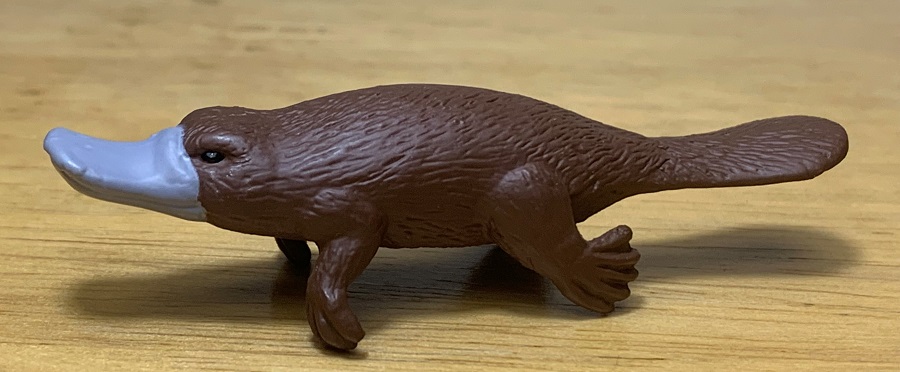

Wombat: Three species of wombat can be found in Australia and this one appears to represent the common wombat (Vombatus ursinus). Wombats occupy a similar niche to burrowing rodents elsewhere in the world; even their dentition is like the gnawing teeth of rodents. This brown wombat is an adorable and stocky fellow. This figure measures about 2” which puts it at about 1/19 in scale when scaled down from a 39” specimen.


Kangaroo: Aside from being labeled as a kangaroo this figure doesn’t give any information on what species of kangaroo it’s supposed to be. I would speculate that it’s a red kangaroo (Osphanter rufus), the largest and one of the most familiar kangaroo species. The figure is posed in an upright posture, supported by the tail, with the head held high. It’s a fine little figure of a kangaroo but what makes it extra special is the tiny little joey peeking out of the pouch, which looks astonishingly good for its size. The figure stands about 2” tall which puts it at about 1/30 in scale when scaled down from a 5’ tall specimen.
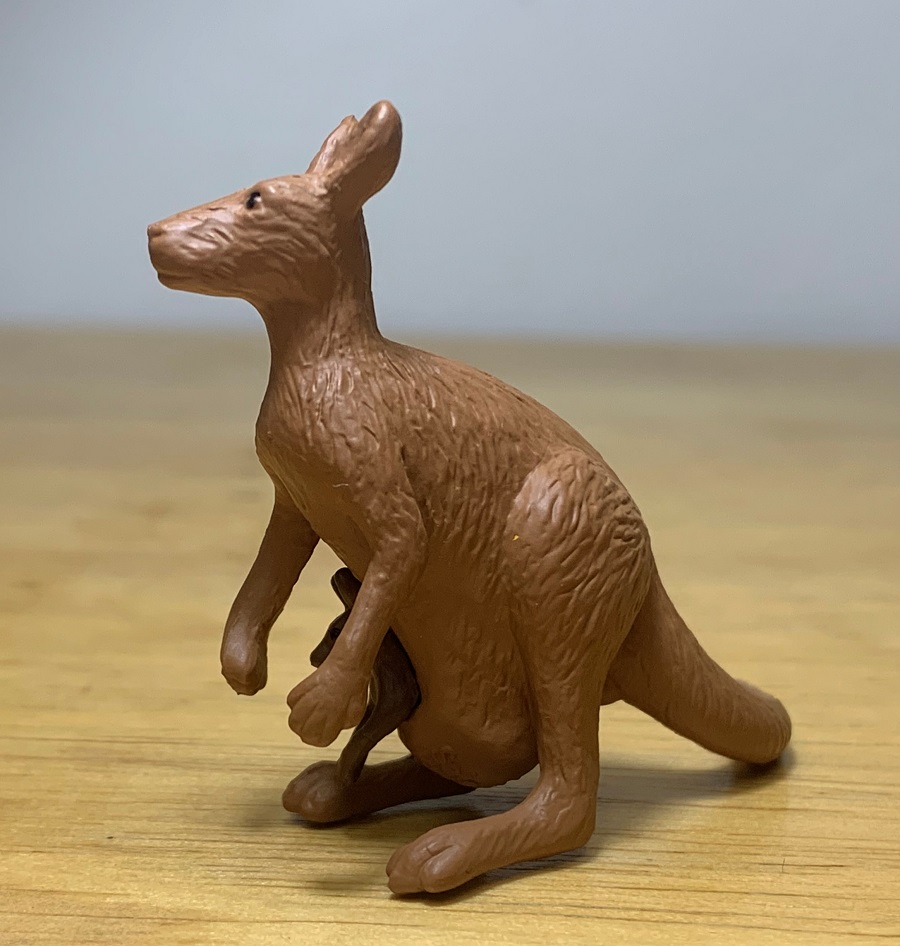
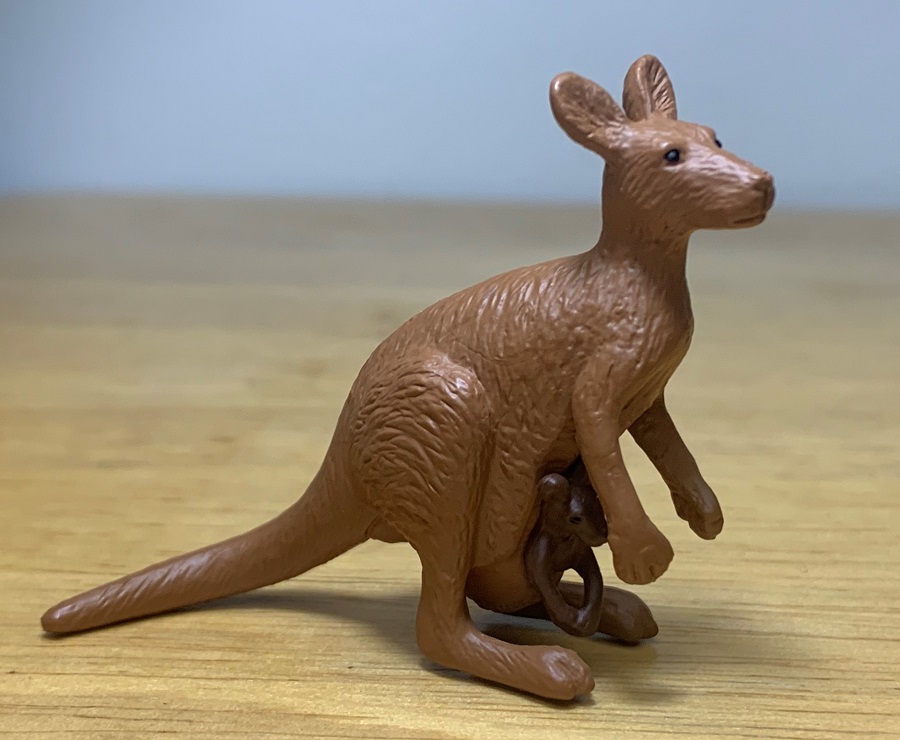
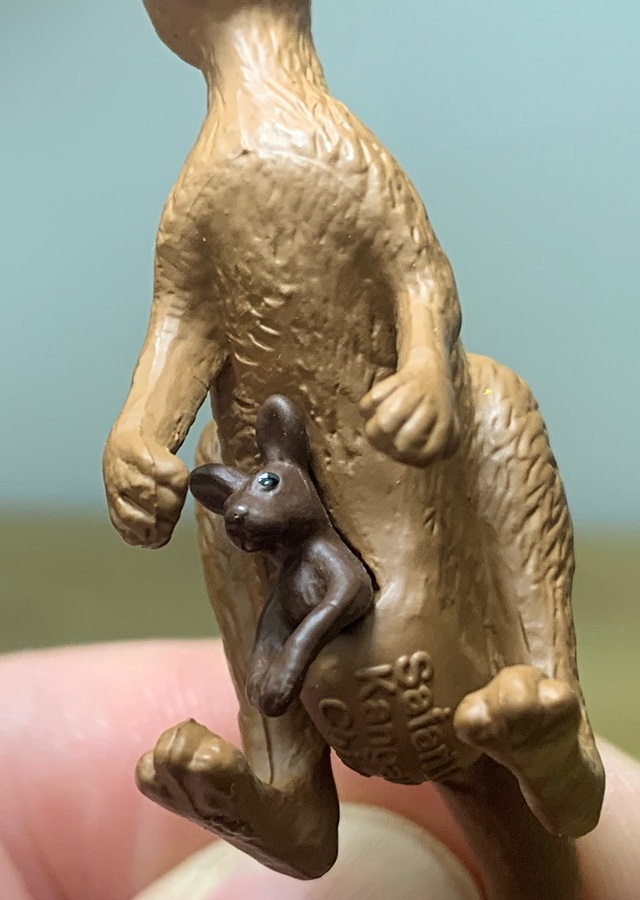
For those that don’t already have the Land Down Under TOOB this is an excellent collection of animals from both Australia and New Zealand that does well in highlighting the unique biodiversity of the two islands. For those that have the aforementioned TOOB I would still recommend this one despite the repeats, as all the New Zealand animals are beautifully crafted and represent generally uncommon species. I do admit that new Australian animals would have been preferable though. The Safari Australian Continent TOOB will be available soon on Safari’s website, here.
Lastly, I would like to extend my gratitude towards Safari Ltd. for kindly sending along this TOOB as a review sample.
Disclaimer: links to Ebay and Amazon on the AnimalToyBlog are affiliate links, so we make a small commission if you use them. Thanks for supporting us!




Interesting; I might try to get the weta if I can find anyone selling it individually. But I can live without it if I have to.
The New Zealand critters look very cool! I would agree that a wholly new set of Australasian animals would be preferable; but since I don’t have the Down Under Toob anyway, I don’t have any reason to pass this one up.